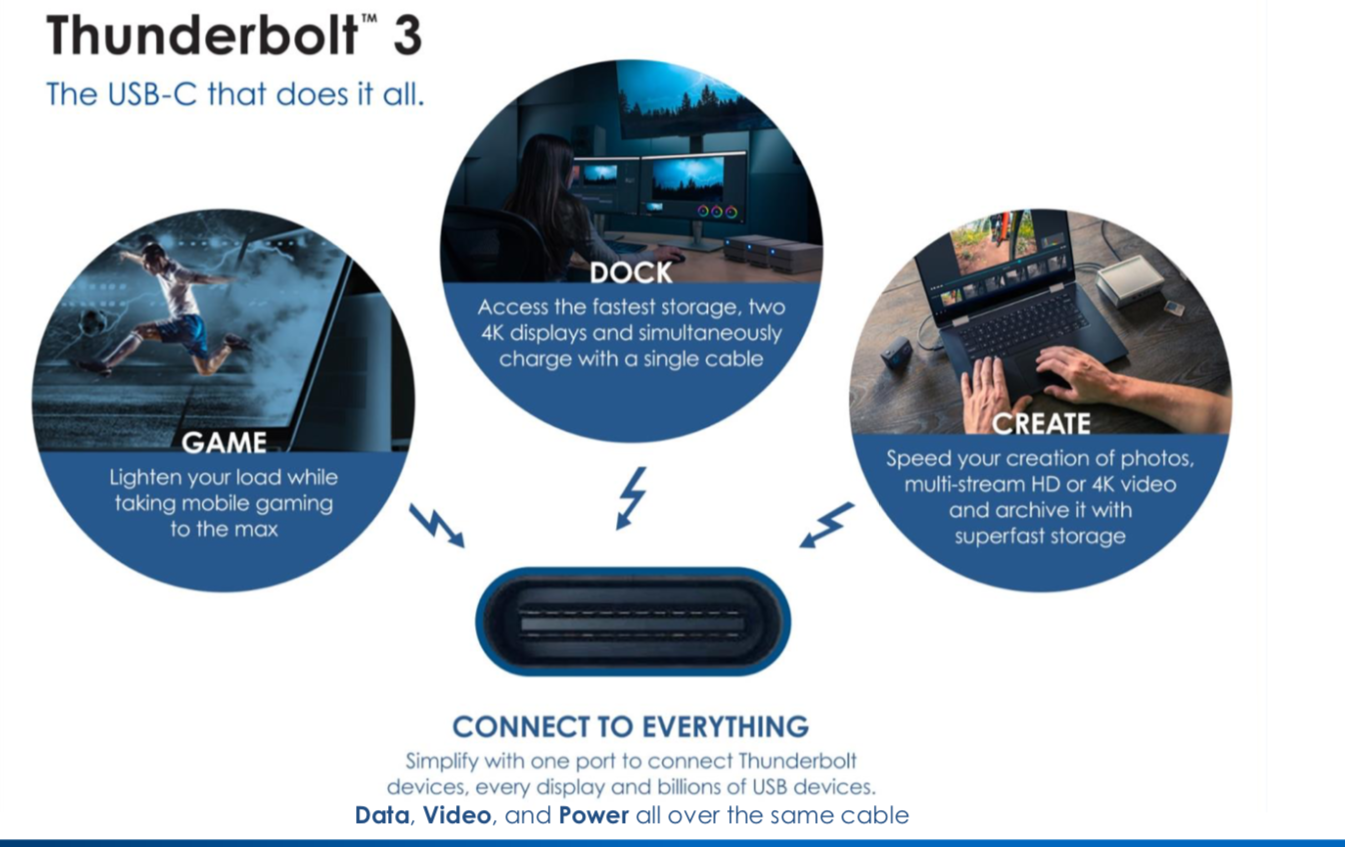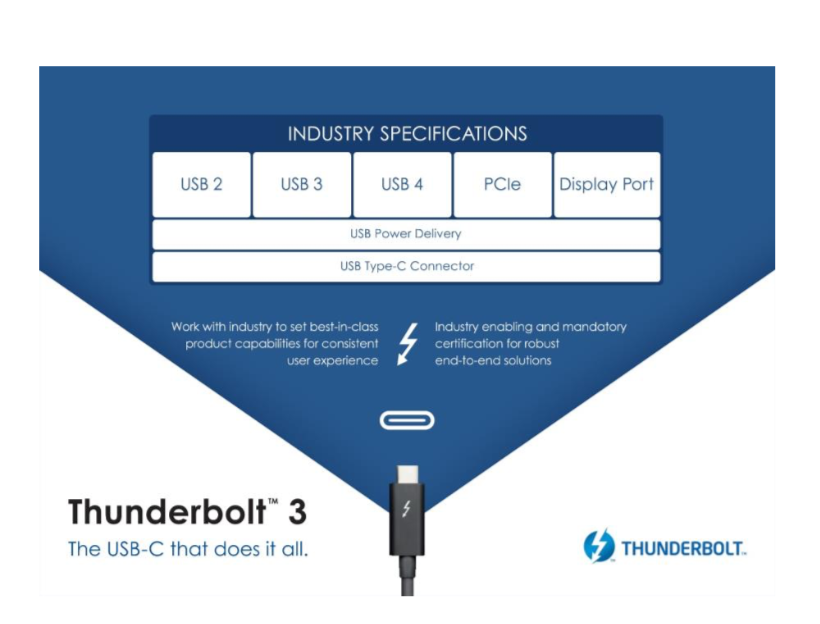Intel’s Thunderbolt at the Core of USB 4
Article By : Matthew Burgess

Intel has announced that it will contribute the Thunderbolt protocol to the USB Promoter Group to integrate Thunderbolt 3 into the new USB 4 architecture.
In order to further expand the device ecosystem supporting the Thunderbolt 3 specification, Intel has announced that it will contribute the Thunderbolt protocol to the USB Promoter Group to integrate Thunderbolt 3 into the new USB 4 architecture. This will enable other chip makers to build Thunderbolt compatible silicon, royalty-free.
As previously revealed at CES 2019, Intel’s 10nm processer code-named “Thunderbolt protocol” will be the first to integrate Thunderbolt 3. This announcement, coupled with the convergence of Thunderbolt and USB protocols, is the next stage in Intel’s attempts to attain mainstream adoption for Thunderbolt 3. Jason Ziller, General Manager of Intel Client Connectivity, tells EE Times Asia that Thunderbolt 3 “is simplifying how consumers connect their devices”. Ziller goes onto tell us that he sees Thunderbolt 3 as “a super set of industry specs that we unified into a solution that enables the consumer to connect any kind of device to a Thunderbolt 3 port on a computer”.
Ziller further explained that Thunderbolt 3 also integrates transmission data and display protocols, daisy-chaining up to six devices, allowing users to connect 4K displays and other Thunderbolt 3 devices (such as external storage) to a PC with a single cable. The Thunderbolt 3 transmits data through four PCIe 3.0 channels, while providing eight channels of DisplayPort 1.2, supporting up to two 4K 60Hz display outputs.

(Source:Intel)
The new USB 4 architecture connects multiple terminal devices through a single high-speed transmission. As the USB Type-C connector has evolved into the role as the external display port of many host products, the USB 4 specification provides the ability to optimally scale allocations for display data flow. Even as the USB 4 specification introduces a new underlying protocol, backwards compatibility with existing USB 3.2, USB 2.0 and Thunderbolt 3 hosts continues to be supported; the resulting connection scales to the best mutual capability of the devices being connected.

(Source:Intel)
With over 50 companies actively participating in the final stages of review of the draft specification, the USB4 specification is on track to be published around the middle of 2019.
Subscribe to Newsletter
Test Qr code text s ss


